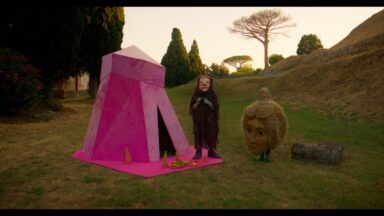A conference on Behavioral City hosted in Venice
The Biennale di Venezia hosted a significant event on Wednesday, November 22, at the ASAC Library in the Giardini. The gathering, titled “Behavioral City: Connecting Minds, Spaces, and Policies,” aimed to delve into and define the concept of Behavioral City as a result of the integration between behavioral governance and urban design. The event commenced with an introduction by Roberto Cicutto, the President of La Biennale. Professor Riccardo Viale, affiliated with the Herbert Simon Society, Bicocca University of Milan, and LUISS of Rome, and the creator of the Behavioral City concept, delivered a lecture, followed by commentary from Architect Benedetto Camerana of Camerana & Partners. Moderating the discussion was Lawyer Debora Rossi, responsible for the Historical Archive of La Biennale di Venezia.
Over the past decade, the role of cognitive sciences in design, architecture, and urban planning has seen remarkable development, giving rise to fields such as behavioral architecture and urbanism. Concepts like nudging and behavioral insights for the development of city policies are gaining attention from academic communities and policymakers. The design of public services is increasingly based on the choice of a behavioral architecture and on motivating people towards new collective actions. Behavioral City is a pioneering concept that seeks to articulate its foundational elements by integrating two essential approaches. The first, Behavioral Urbanism (BU), constitutes an interdisciplinary field examining the intricate interaction between individuals and the built urban environment. This exploration delves into the social effects, cognitive intricacies, and emotional dimensions influencing human behavior within urban settings. The second, Behavioral Public Policy (BPP), represents a behavioral approach to public policies, employing tools from cognitive science and behavioral economics. Its objective is comprehending how citizen behavior can be positively directed towards individual and collective well-being objectives. The amalgamation of these two approaches within Behavioral City aims to provide a comprehensive understanding of human behavior in urban contexts, fostering improved urban planning, design, and policymaking for the holistic well-being of city inhabitants.
The existing gap between these two methods limits behavioral insights (BI), i.e. the behavioral analyses that are developed by both. Behavioral Urbanism is applied to the city’s urban planning already decided by the policymaker. Its function is to study the behavioral effects of an urban structure decided according to non-behavioral variables. The urban plan of a city is designed according to engineering and aesthetic criteria and on the basis of political and economic negotiations, generally without evaluating the effects on citizens’ behavioral change choices and their well-being. On the other hand, Behavioral Public Policy, a new approach, has so far not focused its attention on urban planning but dealt with public services impacting the spatial design of the city, such as sports, education, health, leisure, social inclusion, mobility, energy saving, and environmental protection. To date, however, the integration of the two dimensions has never occurred, either from a practical or conceptual point of view. In this sense, Behavioral City aims to propose, through the study of human behavior, an integrated vision of public services, and urban, and architectural design for better human well-being.

Key aspects of Behavioral Urbanism include understanding how people interact with and respond to the physical, social, and cultural elements of the urban environment. This includes studying how individuals navigate public spaces, make decisions about transportation, engage with public services, and interact with others in the city. The field also considers the impact of social and emotional factors on urban behavior, understanding how the design of public spaces, the arrangement of buildings, and the overall urban layout influence social interactions, community cohesion, and residents’ well-being. Additionally, Behavioral Urbanism often involves cognitive mapping studies, seeking to understand how individuals mentally perceive and navigate urban spaces. This includes examining how people create mental maps of their surroundings, make decisions about routes, and develop a sense of place within the city. Inspired by behavioral economics, Behavioral Urbanism explores the concept of “nudging” in urban design. Nudging involves influencing behavior without imposing restrictions, often by altering the physical environment or providing subtle cues to encourage specific actions. Design interventions based on behavioral insights aim to shape urban spaces to promote positive behaviors and outcomes. Behavioral Urbanism recognizes the importance of involving the community in the urban planning process. Engaging residents and stakeholders allows planners and designers to better understand local preferences, needs, and behaviors, fostering a more inclusive and responsive approach to urban development.
Overall, Behavioral Urbanism seeks to create cities that are not only aesthetically pleasing but also conducive to positive, sustainable, and people-centric behaviors. By integrating behavioral insights into urban planning and design, cities can be more effectively tailored to the needs and preferences of their inhabitants, contributing to improved quality of life and a more resilient urban environment.


